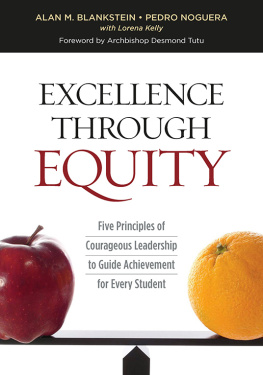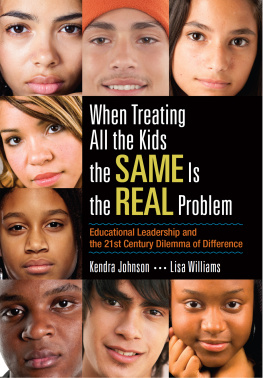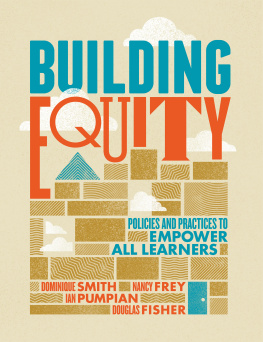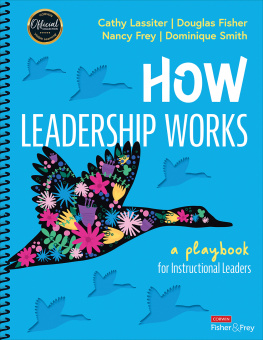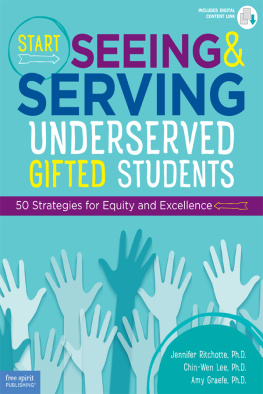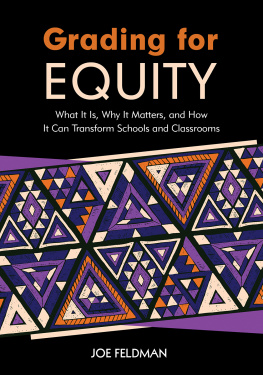

.....
When my grandmother Sarah returned to her small apartment in Oaxaca, Mexico, to find a woman taking food from her refrigerator, she opted to find out why. When she was told that it was for the womans own hungry children, my grandma decided to prepare a meal for her to take to them each day. Compassion and understandingespecially for "the underdog"took Grandma places others would not go and enriched her own life as much as those she helped.
Grandma Sarahs unconditional love for me as a child, likewise, enabled me to make it through.
When Dr. Myland Brown, an African American from Alabama, offered me a way out of the group home in which I lived, via a scholarship to go to college, I saw both an open door and another open heart.
In working on this book, it is my hope that many more such doors and hearts will open to millions of children, including my own: Sarah and Ava. This book is in memory of Grandma Sarah;
In honor of Dr. Myland Brown;
and in awe of Sarah and Avaall of whom are about TRUE excellence, which is always rooted in equity.
Alan M. Blankstein
This book is dedicated to my five children, Joaquin, Amaya, Antonio, Naima, and Ava, who are the living embodiment of excellence through equity. Much of what I have learned about equity I have learned from raising them. Watching them grow and develop and guiding them on the complicated path to adulthood has been my greatest challenge and pleasure.
Pedro Noguera
Foreword
Archbishop Desmond Tutu
H aving helped to act as a catalyst and to shepherd one of the worlds few peaceful transitions from a colonial occupation to a democratically elected president, I can say that a movement is born out of the convergence of dire conditions, a powerful idea, and people committed to carrying out that idea. This landmark book, edited by Alan M. Blankstein and Pedro Noguera, may be a similar catalyst to such a movement. Complete with a bold and compelling vision, cases of success throughout the world, and a guide to action for the reader, Excellence Through Equity: Five Principles of Courageous Leadership to Guide Achievement for Every Student, offers a powerful way forward and new hope for millions of children.
The timing for this book is on target, as America may be reaching a breaking point. Some of the signsgrowing economic disparities, segregated housing, police brutality, and inequitable education for childrenare well known to me and all South Africans who suffered 4 decades of apartheid. Unlike America, the inequities and brutality endured by our people were systematic and officially state-sanctioned. Yet Americas challenges may still feel similar to the children, families, and communities that endure them. Looking from afar at cities throughout America like Ferguson, Missouri, it would seem so.
When a growing number of a countrys citizenry feel overwhelmed, disenfranchised, angry, or hopeless, the possible roads forward are finite and known. Overall economic decline due to neglect of infrastructure and support for the common good is one; violent struggle for power is another. We in South Africa, however, chose a road less traveled. Probably unique in the history of colonialism, White settlers voluntarily gave up their monopoly of political power. The final transfer of power was remarkably peaceful; it is often described as a "miracle" because many thought that South Africa would erupt into violent civil war.
The challenges in choosing the road to higher moral ground and prosperity for all are many. They include confronting old zero-sum game thinking in which someone must lose. Blankstein and Noguera tackle this head-on and provide a more compelling reality in evidence in schools throughout the world. It more closely aligns with our own most highly held tradition of Ubuntu: "I am because you are." This view of a united community was a saving grace in South Africa.
Ubuntu was drawn on by our first popularly elected president, Nelson Mandela, and served as an underpinning of our work in the Truth and Reconciliation Commission, in which we ourselves were wounded healers of our people. We attempted to repair the gap between the races by getting the ugly truth of the apartheid regime and of the liberation movements out into the open, granting amnesty even to the worst offenders, and then seeking to find ways of reconciling the conflicting parties. We realized that everyone in the roomfrom the most powerful leader, to the most victimized young personhad much to learn, and we modeled an environment of equity and equality. We made sure when we had these public hearings that even the furniture layout demonstrated this. We didnt sit on a platform higher than, but we deliberately sat on a level with the victims.
Fortifying this reality of being stronger united than separated similarly, the authors of this book demonstrate in case after case how every student advances when learning in an equitable system. In such an environment, everyone learns and each person counts.
Allowing for this brighter reality in which all of Gods rainbow children succeed within an equitable environment alarms those who fear for the loss of resources for their own child. Blankstein and Noguera rise to the challenge and, along with their coauthors, offer up schools, districts, and even nations that have discovered a more powerful secret: when done well, school communities focused on equity actually better educate wealthy majority students as well as those who are less privileged!
Following ones moral compass to an enlightened but less traveled road to success takes courage. Even if the mind is captured by a glorious vision that the heart is morally compelled to pursue, the body will need specific direction and courage to make the journey successfully in the face of many obstacles. Equity Through Excellence takes this into consideration, spotlighting how pioneers in this venture have successfully moved forward, and framing all of this in five principles of Courageous Leadership.
In their section on "The Arguments for Equity," Blankstein and Noguera share an insight that was also critical to our successful transition of power: We didnt struggle in order just to change the complexion of those who sit in the Union buildings; it was to change the quality of our community and society. We wanted to see a society that was a compassionate society, a caring society, a society where you might not necessarily be madly rich, but you knew that you counted. Excellence Through Equity provides direction for those bent on creating such a society for generations to come. Letting go of a system of winners and losers in favor of what is proposed in this book is a courageous leap forward that we all must take together. Let this bold, practical book be a guide; and may you travel into this new exciting vista, in which every child can succeed, with Godspeed.
God bless you.
Acknowledgments
T his work was catalyzed by many who have taught me about the power of equity, inequity, systems, organizational culture, and leadership. The J ewish Child Care A gency advanced much of this by taking me in as a teenager. The late W. Edwards Deming, my personal mentor, decried the prevailing system of winners and losers and had the courage to do soand often prevailin corporate Japan, corporate America, and throughout the world. Archbishop Desmond Tutu, Nelson Mandela, and the amazing cadre of S outh African leaders that overthrew apartheid did so to replace that systemnot perpetuate it with leaders of a different color. Desmond Tutus work, in particular, has moved me and influenced this work since our first meeting in 1994.
Next page
